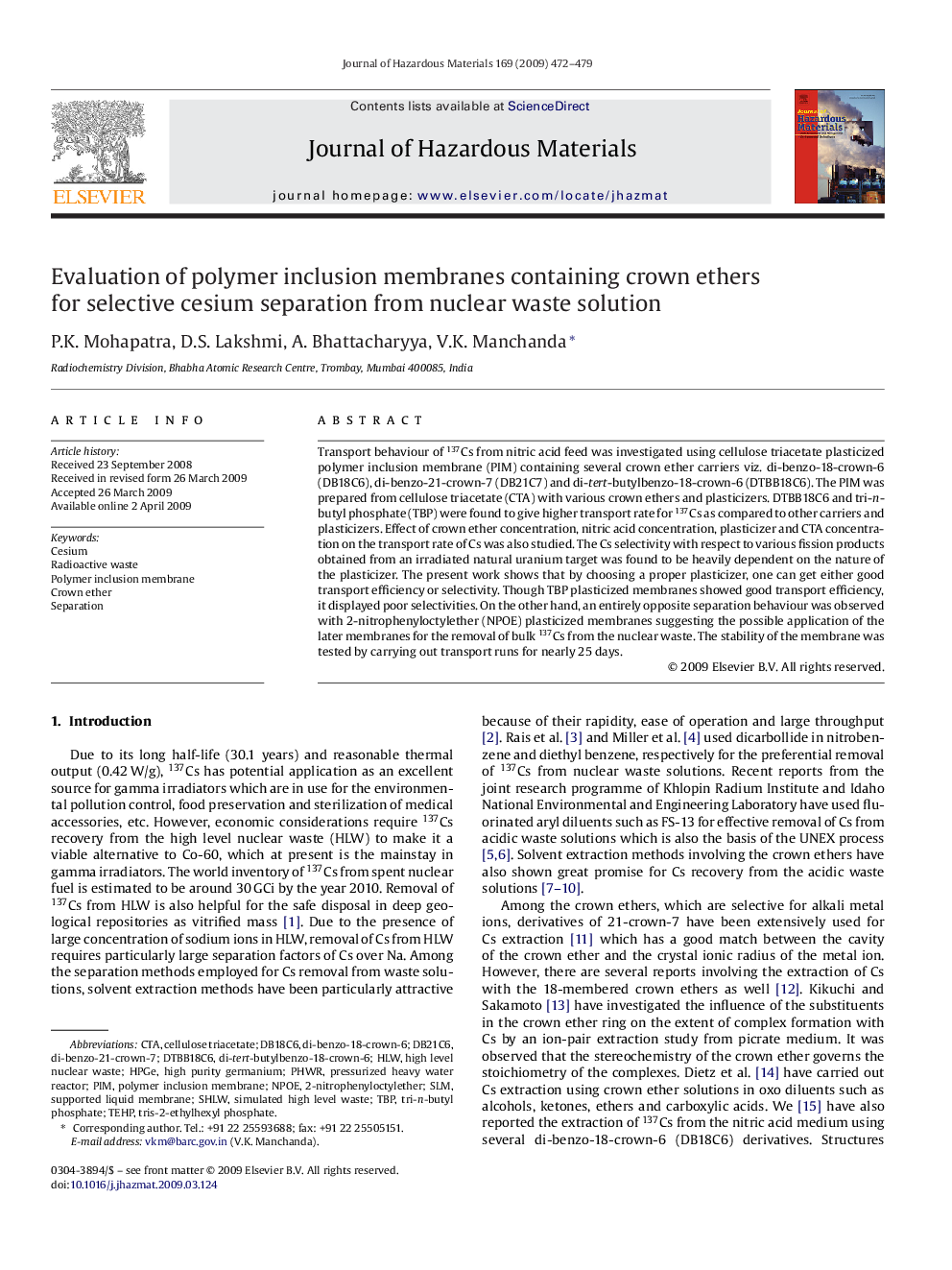| Article ID | Journal | Published Year | Pages | File Type |
|---|---|---|---|---|
| 581606 | Journal of Hazardous Materials | 2009 | 8 Pages |
Abstract
Transport behaviour of 137Cs from nitric acid feed was investigated using cellulose triacetate plasticized polymer inclusion membrane (PIM) containing several crown ether carriers viz. di-benzo-18-crown-6 (DB18C6), di-benzo-21-crown-7 (DB21C7) and di-tert-butylbenzo-18-crown-6 (DTBB18C6). The PIM was prepared from cellulose triacetate (CTA) with various crown ethers and plasticizers. DTBB18C6 and tri-n-butyl phosphate (TBP) were found to give higher transport rate for 137Cs as compared to other carriers and plasticizers. Effect of crown ether concentration, nitric acid concentration, plasticizer and CTA concentration on the transport rate of Cs was also studied. The Cs selectivity with respect to various fission products obtained from an irradiated natural uranium target was found to be heavily dependent on the nature of the plasticizer. The present work shows that by choosing a proper plasticizer, one can get either good transport efficiency or selectivity. Though TBP plasticized membranes showed good transport efficiency, it displayed poor selectivities. On the other hand, an entirely opposite separation behaviour was observed with 2-nitrophenyloctylether (NPOE) plasticized membranes suggesting the possible application of the later membranes for the removal of bulk 137Cs from the nuclear waste. The stability of the membrane was tested by carrying out transport runs for nearly 25 days.
Keywords
Related Topics
Physical Sciences and Engineering
Chemical Engineering
Chemical Health and Safety
Authors
P.K. Mohapatra, D.S. Lakshmi, A. Bhattacharyya, V.K. Manchanda,
